#Wilhelm Sturm
Explore tagged Tumblr posts
Text
Die Anfänge des Fußballs in Stettin und Pommern
Die Fußballgeschichte in Pommern begann mit Vereinen wie dem FC Titania und anderen Stettiner Clubs. Trotz interner Konflikte und Umstrukturierungen schafften sie regionale und überregionale Erfolge...
Die Fußballspieler vom 1. FC Nürnberg in Aktion gegen die Spieler von Titania Stettin im Halbfinale um die Deutsche Meisterschaft am 30.05.1920 in Berlin. (Foto: Dr. Harro Schweizer (c) dpa – Report) Sie hießen Viktoria Stralsund, Greifswalder SC, Comet Stettin, Sturm Lauenburg oder Fortuna Stolp – Pommersche Fußballvereine. Und: Obgleich sie nicht unter den Gründungsmitgliedern des Deutschen…
#Alexander Martinek#Comet Stettin#Edmund Ed Conen#Ernst Plener#FC Greif#FC Hohenzollern#FC Preußen#FC Saxonia#FC Titania#FC Urania#Fortuna Stolp#Germania Stolp#Greifswalder SC#Groß Born#Löwen von Zabelsdorf#Otto Rohwedder#Pommern-Meister#SC Comet#Stettin#Stettiner SC#Stettiner Verein FC Sport#Sturm Lauenburg#VfB Swinemünde#VfL Stettin#Victoria Stolp#Viktoria Stralsund#Wilhelm Sold
1 note
·
View note
Text

Atleta
Ya al comienzo de las excavaciones austriacas en 1896, se realizó uno de los hallazgos más importantes: en la esquina suroeste de la Palaestra del Hafengymnasium, se encontraron un total de 234 fragmentos de una estatua de bronce destrozada. El área de la cabeza y los hombros estaba bien conservada, por lo que el tipo de estatua fue reconocido de inmediato. Se trata de un deportista que se limpia después de un ejercicio físico, tal y como ocurría en la palestra de un instituto. Para eliminar la arena y el aceite con los que uno se frotaba, se usaba un στλεγγίς (strigilis), un raspador. El atleta acaricia esta herramienta (no conservada aquí) con el pulgar de su mano izquierda y la limpia. La instantánea aparentemente accidental de una persona recostada sobre sí misma apunta a un modelo del siglo IV a.C., así como a las características estilísticas de la estatua. Finalmente, se consideró que la estatua era una copia del famoso "Apoxyomenos" (el raspador) de Lysipp. Las estatuas de bronce de la antigüedad rara vez se conservan, ya que el valioso material se fundió en su mayor parte. A menudo "debemos" la tradición a una catástrofe como el hundimiento de un barco o, como aquí, un terremoto en el que la escultura fue arrojada del pedestal y aplastada por la caída de partes. En Viena, los fragmentos fueron remodelados por el escultor Wilhelm Sturm y atornillados a tiras de latón. Las piezas más grandes producidas de esta manera se montaron sobre un esqueleto de varillas de hierro cuadradas y la estatua se rellenó hasta el cuello con un cemento especial que se suponía que proporcionaría estabilidad y cerraría los defectos. En 1996, otra estatua del mismo tipo fue descubierta en el mar frente a la costa croata (Muzej Apoksiomena, Mali Lošinj). Este "gemelo" excelentemente conservado permite una comparación directa de dos copias en bronce y una reevaluación del sistema copista en la antigüedad.
Nombre de la propiedad: Estatua Cultura: Romano Periodo: Período imperial temprano Datación: Siglo I d.C., según el original griego alrededor del 330 a.C. Hábitat: Éfeso, Harbour High School, Palaestra, Selçuk, Asia Menor, Turquía Material/Tecnología: Bronce Métricas: 192 cm Derechos de imagen: Kunsthistorisches Museum Viena, Colección de Antigüedades Clásicas Nº Inv.: Colección de Antigüedades Clásicas, VI 3168 Procedencia: Sultán, Abdul, Hamid, II.; Excavaciones austríacas en Éfeso; Regalo al emperador Francisco José; Posteriormente inventariado en 1911
Información e imagen de la web del Kunsthistorisches Museum.
20 notes
·
View notes
Text
Addendum to Overview and Criteria for Gothic Fiction
When I wrote this thing about gothic novels I only mentioned Friedrich Maximilian Klinger's stageplay Sturm und Drang that premiered in 1777 and lent its name to a proto-Romantic artistic era in Germany.
I completely neglected to consider the influence of Jacob and Wilhelm Grimm's Kinder und Hausmärchen or "Household Tales" published on the 20th of December 1812, because I was focusing on English-language gothic literature, and Margaret Raine Hunt did not translate this collection into English until 1884. (I elected not to measure how many upperclass Englishwomen would be educated to fluency in German before a translation of the Grimm's text was published.)
The Picture of Dorian Gray is a novel by Oscar Wilde published in April 1891. He published a collection of shorter fairy tales before, The Happy Prince and Other Tales in May 1888, but like Wilde's technically-perfect-yet-passionless aesthetic poetry I personally consider them rather twee or prankish. The Picture of Dorian Gray makes a more interesting showcase of gothic fairy tale.
Literary critic and gold-trophy Worst Human Being in History of the Year 1814 Marquis Donatien Alphonse François de Sade keeps turning up in my gothic literature research like a bad penny. (I've read the Marquis's books, they're horrible, I hated them.) His literary criticism remains connected with the gothic, having first theorized in Idée sur les Romans (translated into Some Thoughts on the Novel) that the upheaval and slaughter of the French Revolution inspired authors to get some horror into their Romanticism, and also that the introduction of the Supernatural in the gothic novel posed a dilemma innate to the genre: Either it gets explained, and then the mystique is gone (I'll say this is me about Old Gods of Appalachia when the witches turned cosmic horror into calculated urban fantasy)...or it never gets explained, and then the reader remains at a loss (I'll say this is me about Picnic at Hanging Rock).
What I think the Marquis didn't consider, because The Picture of Dorian Gray was long after his time, was Wilde's creation of a marvelously original "Zaubermärchen" (magic fairytale)—the poetic justice, and the poetic logic that is exhibited in such a way that it only needs intuition rather than explanation. Dorian Gray is so sure he figured something out about his wish, so exactly, but the way the "magic" in this gothic 19th-century fairy tale truly operates makes a tidy and particular sort of sense that is magic of its own.
Grimm, Jacob, and Wilhelm Grimm. The Original Folk and Fairy Tales of the Brothers Grimm: The Complete First Edition. Translated by Jack Zipes, Princeton University Press, New Jersey: 2016.
@rwoh I'm trying to practice dual-mode citations what is this
Grimm, Jacob, Grimm, Wilhelm & Zipes, Jack (Trans.). (2016). 😥 ...wat whas that... The Original Folk and Fairy Tales of the Brothers Grimm: The Complete First Edition. Princeton University Press.
de Sade, Donatien Alphonse François. Some Thoughts on the Novel. Translated by R.J. Dent, Oneiros Books, 2021.
de Sade, Donatien Alphonse François, and R.J. Dent (Trans.). (2021). Some Thoughts on the Novel. Oneiros Books.
I don't have to cite The Picture of Dorian Gray, right? You all are the dark academia subculture, you all know by now what The Picture of Dorian Gray is.
#gothic literature#goth lit#dark academia#The Picture of Dorian Gray#Oscar Wilde#the Marquis who must not be named
6 notes
·
View notes
Text
Südengland 2023 - Tag 15 / 1
Ladies und Gentlemen!
Heute geht es für uns in die Steinzeit - und zwar den ganzen Tag. Dafür fahren wir gute 1 1/2 Stunden nach Osten in Richtung Salisbury.

Doch bevor es dazu kommt, schauen wir erst einmal bei dem Festival Gelände vorbei, wo die Aufbauarbeiten bereits in “Full Swing” sind.

Das Glastonbury Festival of Contemporary Performing Arts ist ein Festival für Musik und darstellende Kunst, das jährlich auf einer Farm nahe Glastonbury stattfindet.

Etwa vergleichbar, wie unser Wacken Festival in Schleswig-Holstein, nur mit dem geringfügigen Unterschied, dass hier etwa 3x so viele Menschen kommen - nämlich über 200.000. Damit ist es das größte Musikspektakel auf der Welt.

Wir machen, streng beäugt vom Sicherheitspersonal, ein paar Aufnahmen und fahren dann auch gleich zügig weiter.

Ich gebe zu, dass ich noch nie von Old Sarum gehört hatte, bis ich anfing über Stonehenge für unsere Reiseplanung zu recherchieren.

Old Sarum (früher bekannt als Seresberi Castle) ist der Standort der frühesten Siedlung von Salisbury in England und wird in einigen der frühesten Aufzeichnungen des Landes erwähnt. Es liegt auf einem Hügel etwa zwei Meilen nördlich des modernen Salisbury.

Old Sarum war ursprünglich eine Hügelfestung, die strategisch günstig an der Verbindung zweier Handelswege und des Flusses Avon gelegen war. Die Wallburg hat eine breit ovale Form und ist 1300 Fuß lang und 1200 Fuß breit, mit einem Eingang an der Ostseite.

Archäologische Überreste von rohen Steinwerkzeugen deuten darauf hin, dass Menschen das Hügelgebiet von Old Sarum seit der Jungsteinzeit (um 3000 v. Chr.) bewohnt haben.
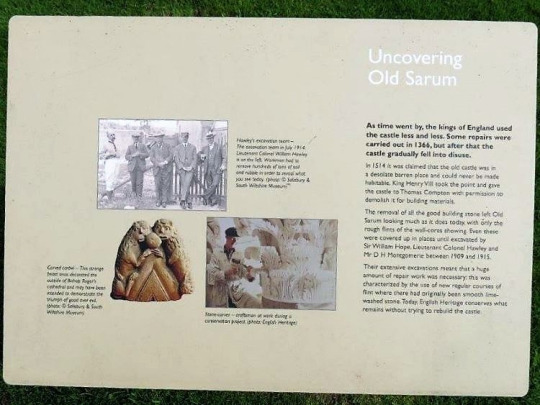
Es gibt Hinweise darauf, dass frühe Jäger und später Bauerngemeinschaften das Gelände besetzten und es bis 1500 v. Chr. Für saisonale Versammlungen genutzt wurde.

Aufgrund seiner Nähe zu Stonehenge hatte es vermutlich eine wichtige Funktion. Die Hügel rund um das Gebiet waren für Bestattungen bestimmt, daher hatte das Gebiet wahrscheinlich eine gewisse Bedeutung.

Während der Eisenzeit (ca. 500 v. Chr.) wurde es, aufgrund von Unruhen in der Gegend mit anderen Stämmen, in eine schützende Hügelfestung errichtet, indem riesige Wälle und Gräben rund um den Hügel angelegt wurden.

Die Römer, die Britannien zwischen 43 und 410 n. Chr. besetzten, hielten die Stelle als Militärstation strategisch günstig, in der Nähe des Zusammenflusses von fünf wichtigen Straßen, gelegen.

Die Wallburg war auf römischen Straßenkarten mit dem Namen Sorviodunum gekennzeichnet. Es wird angenommen, dass der Name vom keltischen Namen für „die Festung an einem sanften Fluss“ abgeleitet ist.

Nach der römischen Besetzung soll Cynric King of Wessex den Ort im Jahr 552 erobert haben. Unter den Sachsen zählte es zu den bedeutendsten Städten des Westreichs und erhielt bald nach der Bekehrung der Sachsen zum Christentum kirchliche Einrichtungen.
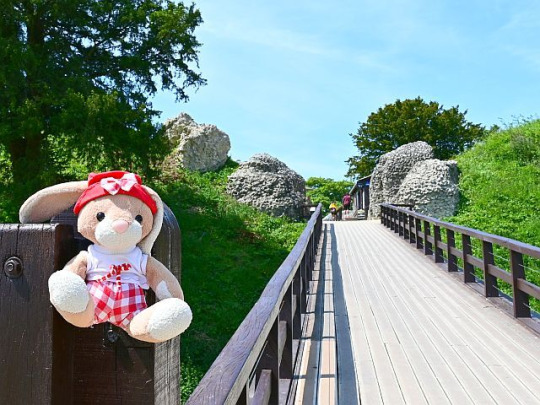
Zu Beginn des 9. Jahrhunderts war es eine häufige Residenz von Egbert von Wessex, und 960 versammelte König Edgar dort einen Nationalrat, um eine Verteidigung gegen die Dänen im Norden zu planen.

Kurz nach der Eroberung durch die Normannen wurde um 1069, nachdem Wilhelm der Eroberer die defensiven Qualitäten von Seresberi erkannt hatte, eine Motte- und Bailey-Burg errichtet und die Stadt umbenannt.

Der Bau einer Kathedrale und eines Bischofspalastes erfolgte zwischen 1075 und 1092, während der Zeit von Bischof Osmund. Die Position wurde wahrscheinlich gewählt, weil sie so nahe an der Burg lag. Die Umrisse der Domanlage sind auch heute noch gut zu erkennen.

Doch nur fünf Tage nach der Domweihe zerstörte ein Sturm das Turmdach. Die endgültige Fertigstellung der Kathedrale wurde dem dritten Bischof von Old Sarum, Roger von Salisbury, Kanzler von König Heinrich I., überlassen.

Der Hof wurde um 1100 von Bischof Roger ebenfalls hinzugefügt und er begann in den 1130er Jahren auch mit der Arbeit an einem königlichen Palast, bevor er von Henrys Nachfolger Stephen verhaftet wurde.

Im Jahr 1171 befahl König Heinrich II den Ausbau an Old Sarum (der bis 1189 andauerte), darunter ein neues Torhaus, eine Zugbrücke, innere Burgmauern und eine Schatzkammer, die im Bergfried der Burg errichtet wurde.

Zusätzlich zu diesen Arbeiten wird die Renovierung des Quartiers für Königin Eleonore von Aquitanien für die Zeit ihres Hausarrests in Old Sarum abgeschlossen.
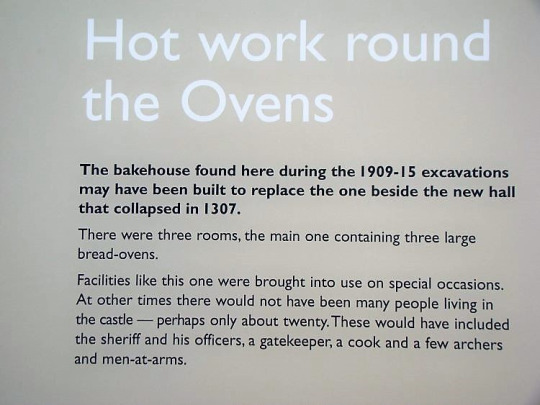
Nach fortgesetzten Reparaturen und Instandhaltungen werden ein neuer Saal, eine Küche und ein Backhaus errichtet wurden von 1201 bis 1215 für den Sheriff gebaut.

Ab 1219 waren die Platzbeschränkungen auf dem Hügelgrundstück Anlass zur Sorge und auch die zunehmende Wasserknappheit war ein großer Knackpunkt.

Der Standort einer neuen Kathedrale wurde später in diesem Jahr geweiht, und 1220 begann der Bischof mit dem Bau am Ufer des Avon. Um ihn herum entstand eine neue Siedlung namens New Sarum, die schließlich als Salisbury bekannt wurde.

Bis 1217 hatten die Bewohner von Old Sarum ihren Standort verlassen und ihre neuen Behausungen mit den Materialien errichtet, die sie von ihren alten abtrugen - wobei nur die zerstörten Mauern und Fundamente zurück blieben, die wir heute sehen.

Als die eine Stadt an Bevölkerung und Ausdehnung zunahm, verfiel die andere fast ebenso schnell. Die prächtige neue Kathedrale von Salisbury zog Scharen von Pilgern an.
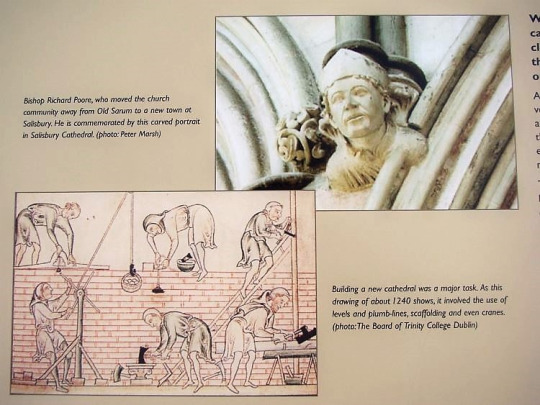
Heute sind nur noch der Hügel und die Fundamente der Burg erhalten. Da hier keine Audiotour angeboten wird, besorgten wir uns schon im Vorfeld einen Führer, um uns einzulesen und besser zurechtzufinden.

Den Eingang zum Castle erreicht man über eine Fußgängerbrücke. Hier befand sich auch ursprünglich der Haupteingang.

Es war schon interessant, über die Vorburg zu gehen, den Graben zu überqueren, wo sich die Zugbrücke befunden hat, und zur Kernburg hinaufzugehen, wo der Palast und die Burg liegen.

Die Überreste der ursprünglichen Kathedrale befinden sich dahinter auf der Vorburg.

Im Inneren befindet sich der Innenhof, in dem verschiedene Gebäude gestanden haben. Davor liegt die Große Halle, die Anfang 1200 von König John erbaut wurde.

Der königliche Palast nahm ebenfalls diesen Bereich des Innenhofs ein. Hier hat man einen guten Blick auf die Kathedrale. Wir konnten sehen, wo sich einst die Wohnungen, die Kapelle und die Latrinen befanden.

Die Latrinen waren ausgedehnte Löcher im Boden. Gereinigt wurden sie, in dem man eine Person in sie herab ließ. Es gab wahrscheinlich schönere Arbeiten ab königlichen Hof.

Wir laufen entlang der Kante des Innenhofs, unten liegen der Graben und der äußere Hof. Die nächste Station war ein kurzer Spaziergang um den Graben herum, zu den Überresten der Kathedrale.

Wichtiger Hinweis: dieser Bereich kann völlig kostenfrei besucht werden. Eine Eintrittsgebühr wird nur für die Burgruine erhoben - für Mitglieder des English Heritage ist natürlich der Eintritt abgegolten.

Die Überreste der Kathedrale befinden sich auf der südwestlichen Seite. Das Kirchenschiff ist der einzige Bereich, den normale Menschen betreten konnten, und es gab damals interessanterweise gar keine Sitzgelegenheiten.

Die Aussicht über Wiltshire und der Blick auf die Kathedrale von Salisbury waren wirklich toll, obwohl der Tag sehr windig war.

Das Gelände bietet sich an, um sich hinzusetzen und zu entspannen. Es stehen einige Bänke zur Verfügung und man darf sogar sein eigenes Picknick mitbringen.

Old Sarum Castle wird zusammen mit den Ruinen der Kathedrale heute von English Heritage verwaltet. Der gepflasterte Parkplatz und der begrünte Überlaufparkplatz befinden sich im östlichen Bereich der Vorburg. Es gibt ein kleines Büro, um Tickets zu kaufen, zu spenden oder Souvenirs zu kaufen.

Unsere Mittagspause verbringen wir nur wenige Meter weiter, im “The Old Castle”.

Einem Lokal dessen Geschichte nicht ganz so lange zurück reicht, aber dennoch auch schon 350 Jahre auf dem Buckel hat.

Erbaut wurde das “Inn” als Postkutschenstation in der zweiten Hälfte des 16. Jahrhunderts.

Der Kern ist somit elisabethanischer Stil (Bau- und Dekorationsstil der Regierungszeit Königin Elisabeths I.).

Im 18ten Jahrhundert wurden Erweiterungen vorgenommen, da der ursprüngliche Platz nicht mehr ausreichend war.

Das Lokal verfügt über einen großen Biergarten, in dem es sich bei gutem Wetter hervorragend sitzen lässt.

Nach dem Mittagessen machen wir uns auf den Weg zum heutigen Höhepunkt: Stonehenge.

Weiter geht´s mit Teil 2 ...
7 notes
·
View notes
Text
Markus Memorandum - eine interaktive Geschichte
Prolog
Es liegt Nebel über der Grimnitzsche Heide. Ich heiße Markus – einst niemand von Bedeutung, Vermessungsknecht und Kompist im Dienst von Johann von Altenhain.
Es wundert mich nicht, wenn euch dieser Name nichts sagt. Den wenigsten sagt er etwas, und wenn, dann wird er nur hinter vorgehaltener Hand erwähnt. Johann von Altenhain stand im Dienst Georg Wilhelms und war Teil einer jener Kammern, die den Kurfürsten berieten. Die exakte Katografierung des Landes und seiner Untertanen sollte als Grundlage für die Entwicklung der Region dienen.
Ich selbst war einst ein Straßenjunge. Meine Eltern kamen in den Wirren einer Fehde um. Für meinen Onkel war ich nichts als eine Belastung in kargen Zeiten. Der Gewalt und Tyrannei zu entkommen, war meine eigene Entscheidung. Ich schlug mich durch. Gewalt war Teil meines Lebens.
Ich zog durch die Wälder, von Ort zu Ort, und lernte die Gegenden besser kennen als viele, die dort geboren wurden. Die Dorfbewohner waren mir fremd und blieben meist verschlossen. Der eine oder andere Bauer jedoch nahm meine Arbeitskraft an, ließ mich auf dem Feld schuften. Manche gaben mir Essen, gelegentlich auch ein Dach über dem Kopf. Andere betrogen mich um meinen Lohn oder hetzten ihre Hunde auf mich.
Die Wälder waren nicht ungefährlich, aber für mich berechenbarer als viele Menschen. Ich lebte eine Zeit lang wie ein Eremit. Ich habe nie verstanden, warum die Menschen den Wolf fürchten – man sollte eher den Menschen fürchten. Homo homini lupus est. Nur der Mensch kennt Freude am Töten. Der Wolf handelt instinktiv – ohne Seele, ohne moralische Kategorien wie Gut und Böse.
Ich habe Dinge getan, auf die ich nicht stolz bin – aber ich tat sie, um zu überleben.
Die Begegnung mit Altenhain geschah zufällig. Er suchte einen ortskundigen Führer, und ich war da. Da der Herbst langsam in den Winter überging, bot er mir im Gegenzug für meine Dienste Unterkunft über die kalte Zeit an.
Altenhain war ein hagerer Mann mit schütterem Haar. Seine Kleidung war zugleich funktional und militärisch. Ein breitkrempiger, dunkler Filzhut verdeckte sein graues Haar. Er trug ein grob gewebtes, knielanges Wams, dessen Schultern mit Leder verstärkt waren – so drückten die Gurte seiner Geräte nicht direkt auf den Körper. Sein Leinenhemd war mit einem Stehkragen versehen. Es war die Kleidung eines preußischen Beamten – schlicht, aber bestimmt.
Er achtete penibel auf sein Äußeres: stets glatt rasiert, das Kopfhaar kurz geschnitten. Bei offiziellen Anlässen trug er eine Perücke aus Echthaar.
Ich dagegen war sein völliges Gegenteil. Mein braunes Haar hing wild bis zu den Schultern, der Bart war kraus und ungepflegt – nichts davon entsprach der Etikette.
Altenhain hatte sich über mich erkundigt. Man sagte ihm, ich könne weder lesen noch schreiben, sei aber zuverlässig in der Arbeit und wisse mich zu wehren. Niemand konnte sich erinnern, mich je in einer Kirche gesehen zu haben.
Spätestens an dieser Stelle hätte mir klar werden müssen, dass dieser Hundsfott eines Ministerialbeamten mich nicht zufällig gewählt hatte. Mein Leben, mein Wesen – all das hatte er wohl gezielt in seinen Plan eingewoben. Doch damals war mir das noch nicht bewusst.
1 note
·
View note
Text
Serbski Sejm: Rechte Unterwanderung? Volksvertretung der Sorben in der Kritik
Die bevorstehende Wahl zum Serbski Sejm, dem Parlament der Sorben, sorgt für massive Kritik. Auf den Wahllisten stehen zwei Kandidaten mit rechtsextremen Verbindungen: Hannes Wilhelm-Kell (AfD) und Marc Sturm, der den Holocaust infrage stellt. Die Domowina, der Bund Lausitzer Sorben, schlägt Alarm: „Dass nun selbst Personen aus extremistischen Gruppierungen für eine sorbische Initiative…
0 notes
Text
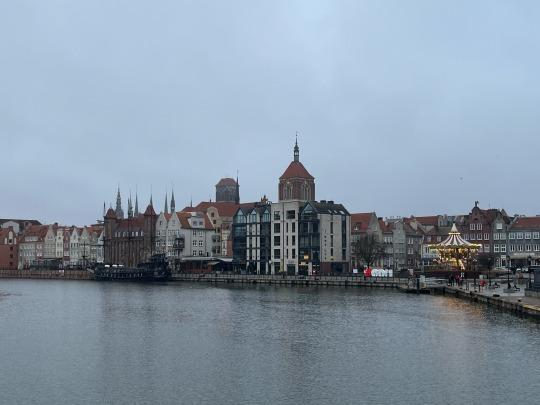
Danzig wurde im 10. Jahrhundert als slawische Siedlung gegründet. Im XIV. Jahrhundert der Deutsche Orden eroberte die Stadt und baute sie zu einer wichtigen Handelsmetropole aus. Der Einfluss der Hanse führte zur wirtschaftlichen Blüte. Im 1793 Danzig wurde Teil des Königreichs Preußen. Nach dem Ersten Weltkrieg wurde Danzig gemäß dem Versailler Vertrag eine Freie Stadt: blieb jedoch wirtschaftlich und kulturell eng mit Polen verbunden. Der deutsche Angriff auf Polen und die Besetzung der Danziger Westerplatte am 1. September 1939 markierten den Beginn des Zweiten Weltkriegs.
Die Geschichte der Kunst und Kultur in Deutschland ist lang und erfolgreich. Hier ist eine Chronologie.
1150: Hildegard von Bingen schreibt „Scivias“ (Wisse die Wege), eine Sammlung von Visionen und theologischem Wissen. Beginn der Minnesang-Tradition.
1280: Epos „Nibelungenlied“ Niederschrift des Epos, ein zentraler Text der deutschen mittelalterlichen Literatur.
1305: Meister Eckhart . Beginn seiner Predigten und Schriften, die die Mystik stark beeinflussten.
1455: Johannes Gutenberg druckt die erste Bibel mit beweglichen Lettern, revolutioniert die Verbreitung von Visse.
1500: Albrecht Dürer. Beginn seiner Karriere; bekannt für Kupferstiche wie „Ritter, Tod und Teufel“.
1530: Hans Holbein der Jüngere Bekannt für Porträts wie das von Heinrich VIII., Vorbild für die Renaissance-Malerei.
1534: Luthers Übersetzung der Bibel ins Deutsche war ein Meilenstein für die deutsche Sprache und Literatur.
1618–1648: Dreißigjähriger Krieg. Der Dreißigjährige Krieg verwüstete Deutschland und führte zu wirtschaftlichem, sozialem und kulturellem Niedergang. In dieser Zeit war es schwer, literarische oder künstlerische Blütezeiten zu erleben, da das Überleben Vorrang hatte.
1705: Johann Sebastian Bach. Erste größere Kompositionen, darunter die „Toccata und Fuge in d-Moll“.
1720 - 1740: Das Klavier wurde erfunden. Das Klavier (Hammerklavier) konnte im Gegensatz zum Cembalo laute (forte) und leise (piano) Töne spielen, indem der Anschlag der Tasten variiert wurde. Der Tonumfang des Klaviers wurde im 19. Jahrhundert von ursprünglich 4 bis 5 Oktaven auf 7 bis 7,5 Oktaven erweitert. Dies ermöglichte eine breitere Palette von Kompositionen mit mehr Tiefe und Komplexität.
1721: Brandenburgische Konzerte – Johann Sebastian Bach
1740 Friedrich der Große König
1741: Der Messias – Georg Friedrich Händel
1747: Musicalisches Opfer von Johann Sebastian Bach, angeboten an Friedrich der Große.
1774: Die Leiden des jungen Werther – Johann Wolfgang von Goethe. Der Sturm und Drang war eine literarische und kulturelle Bewegung in Deutschland, die als Reaktion auf die Aufklärung entstand. Sie betonte Emotion, Individualität und die Rebellion gegen Autoritäten und traditionelle Normen.
1787: Wolfgang Amadeus Mozart. Premiere der Oper „Don Giovanni“ in Prag. Eine kleine Nachtmusik: Mozart lebte in einer Zeit, in der die Musik höfisch geprägt war, und seine Werke orientierten sich oft an den Erwartungen von Adel und Gesellschaft.
1801: Ludwig van Beethoven. Erste Aufführung seiner „Klaviersonate Nr. 14“, bekannt als „Mondscheinsonate“.
1804: Ludwig van Beethoven . Komposition der „3. Sinfonie“ (Eroica), ein Wendepunkt in der klassischen Musik.
1807: Georg Wilhelm Friedrich Hegel. Veröffentlichung von „Phänomenologie des Geistes“.
1808: 5. Sinfonie in c-Moll, op. 67 - Ludwig van Beethoven. Beethovens Stil ist kraftvoll, emotional und oft dramatisch. Beispiele: Sinfonie Nr. 5, die mit ihrem markanten Anfangsmotiv Stärke und Schicksalhaftigkeit ausdrückt.
1818: Der Wanderer über dem Nebelmeer – Caspar David Friedrich
1824: Ludwig van Beethoven. Uraufführung der „9. Sinfonie“, ein Meilenstein der klassischen Musik.
1827: Winterreise – Franz Schubert
1851 Ungarische Rhapsodie Nr. 2 - Franz Liszt nutzte die Pedale des Klaviers virtuos und trug wesentlich dazu bei, ihre Möglichkeiten in der romantischen Klaviermusik zu etablieren.
1857: Richard Wagner. Veröffentlichung von „Das Rheingold“, der erste Teil des „Ring des Nibelungen“.
1888: Wilhelm II. Kaiser
1896: Also sprach Zarathustra - Richard Strauss
1901: Thomas Mann. Veröffentlichung von „Buddenbrooks“, seinem ersten großen Roman, für den er 1929 den Nobelpreis erhielt.
1902: Symphonie Nr. 5 in cis-Moll – Gustav Mahler. Enthält das berühmte „Adagietto“.
1915: Die Verwandlung- Franz Kafka
1922: Siddhartha – Hermann Hesse
1924: Franz Kafka. Veröffentlichung des posthumen Romans „Das Schloss“.
1929: Erich Maria Remarque Veröffentlichung von „Im Westen nichts Neues“, einem Anti-Kriegsroman über den Ersten Weltkrieg.
1932: Radetzkymarsch (Joseph Roth)
0 notes
Video
youtube
e-book grátis OS SOFRIMENTOS DO JOVEM WERTHER, Johann Wolfgang von Goethe
"Os Sofrimentos do Jovem Werther" (originalmente Die Leiden des jungen Werthers) de Johann Wolfgang von Goethe é um romance epistolar publicado em 1774, considerado uma das obras fundadoras do movimento literário “Sturm und Drang”. O livro foi revolucionário por sua profunda exploração emocional e pela maneira como influenciou a juventude da época, tanto em termos de estilo de vida quanto de expressão pessoal.
A história é narrada através de cartas que o jovem Werther escreve a seu amigo Wilhelm. O protagonista, Werther, é um homem sensível e emocionalmente intenso que se apaixona perdidamente por Charlotte (Lotte), uma jovem noiva de Albert, com quem ela acaba se casando. Apesar de saber desde o início que o amor por Charlotte é impossível, Werther não consegue afastar seus sentimentos.
As cartas de Werther se tornam cada vez mais sombrias e desesperadas, refletindo a frustração crescente de sua vida amorosa e o seu desencanto com a sociedade. Ele se sente isolado, rejeitado e sem propósito, o que eventualmente o leva ao suicídio.
O amor inatingível de Werther por Charlotte é o centro do enredo. A intensidade emocional desse amor e a incapacidade de Werther de lidar com a rejeição o levam ao desespero. O romance enfatiza os sentimentos individuais e a rejeição das normas sociais. Werther é o retrato de um indivíduo que busca viver de acordo com suas próprias emoções, em contraste com as convenções e expectativas da sociedade.
Goethe usa a natureza como um reflexo do estado emocional de Werther. Os cenários descritos nas cartas frequentemente espelham os sentimentos do protagonista — paisagens bucólicas e tranquilas refletem seus momentos de esperança, enquanto tempestades e paisagens sombrias simbolizam sua angústia.
O suicídio de Werther foi um tema altamente controverso na época de sua publicação. O livro provocou uma onda de suicídios imitativos, conhecida como o "Efeito Werther", uma demonstração da intensa identificação que muitos jovens sentiram com o personagem.
O livro teve um impacto imenso na literatura e na cultura europeia. O romance se tornou um ícone da era do Romantismo e inspirou inúmeros jovens a adotarem o estilo melancólico e introspectivo de Werther. Goethe, apesar de ter escrito o livro numa fase inicial de sua carreira, mais tarde expressou certa distância em relação à obra, especialmente devido à popularização do suicídio entre seus leitores mais jovens.
O romance também explora questões filosóficas sobre o sentido da vida e a luta entre a razão e a emoção. Werther simboliza o conflito entre o impulso irracional do desejo e o controle racional que a sociedade impõe. A tragédia de Werther é, em última análise, uma tragédia de desajuste entre o indivíduo e o mundo ao seu redor.
Esta obra, ao mesmo tempo poética e profundamente emocional, não só marca um ponto alto na produção literária de Goethe, mas também é um reflexo da transição cultural de sua época, onde o individualismo e as emoções pessoais começavam a desafiar os antigos valores de racionalidade e controle social.
Leia, gratuitamente, OS SOFRIMENTOS DO JOVEM WERTHER, Johann Wolfgang von Goethe: https://tinyurl.com/yc8bwjfh
0 notes
Text



Antike (ca. 2000 vChr. bis ca. 500 nChr.)
Gilgamesch-Epos
Homer: Ilias, Odyssee
Äsop: Fabelsammlung
Caesar, Gaius Iulius: Der gallische Krieg
Vergil: Aeneis
Ovid: Metamorphosen
Tacitus, Publius Cornelius: Germania
Augustinus, Aurelius: Bekenntnisse
Herodot: Historien
Mittelalter (500-1500)
Beowulf
Murasaki Shikibu: Die Geschichte vom Prinzen Genji
1001 Nacht
Nibelungenlied
Gottfried von Straßburg: Tristan
Wolfram von Eschenbach: Parzival
Chaucer, Geoffrey: Die Canterbury-Erzählungen
Renaissance (1500-1600) und
Barock (1600-1720)
Boccaccio, Giovanni: Das Dekameron
Brant, Sebastian: Das Narrenschiff
Machiavelli, Niccolö: Der Fürst
More, Thomas: Utopia
Rabelais, Franois: Gargantua und Pantagruel
Cervantes Saavedra, Miguel de: Don Quijote
Grimmelshausen: Der Abentheurliche Simplicissimus Teutsch
Aufklärung (1720-1785)
Hobbes, Thomas: Leviathan
Fielding, Henry: Die Geschichte des Tom Jones, eines Findlings
Voltaire: Candide
Sterne, Laurence: Leben und Ansichten von Tristram Shandy, Gentleman
Rousseau, Jean-Jacques: Emile oder Über die Erziehung
Kant, Immanuel: Kritik der reinen Vernunft
Sturm und Drang (1765-1790)
Goethe, Johann Wolfgang von: Die Leiden des jungen Werthers
Bürger, Gottfried August: Münchhausen
Klassik (1786-1832)
Defoe, Daniel: Robinson Crusoe
Swift, Jonathan: Gullivers Reisen
Goethe, Johann Wolfgang von: Die Wahlverwandtschaften
Kleist, Heinrich von: Michael Kohlhaas
Romantik (1798-1835)
Arnim, Achim von/Brentano, Clemens: Des Knaben Wunderhorn
Grimm, Jacob und Wilhelm: Kinder- und Hausmärchen
Austen, Jane: Stolz undVorurteil
Eichendorff, Joseph Freiherr von: Aus dem Leben eines Taugenichts
Andersen, Hans Christian: Märchen
Gogol, Nikolai: Tote Seelen
Balzac, Honore de: Verlorene Illusionen, Glanz und Elend der Kurtisanen
Bronte, Charlotte: Jane Eyre
Bronte, Emily: Die Sturmhöhe
Huge, Victor: Die Elenden
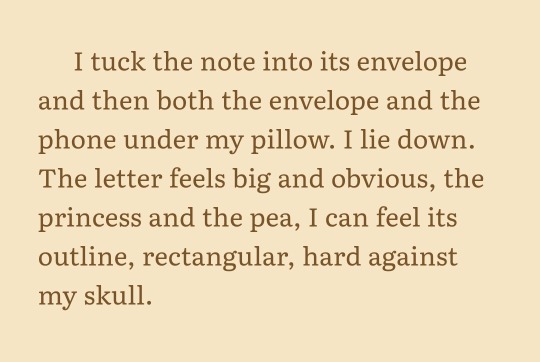
Biedermeier und Vormärz (1815-1848)
Heine, Heinrich: Buch der Lieder, Deutschland. Ein Wintermärchen
Büchner, Georg: Lenz
Droste-Hülshoff, Annette von: Die Judenbuche

Moderne (1850-1968)
Melville, Herman: Moby Dick
Beecher Stowe, Harriett: Onkel Toms Hütte
Keller, Gottfried: Dergrüne Heinrich
Dickens, Charles: Große Erwartungen
Dostojewski, Fjodor: Der Idiot
Tolstoi, Lew: Krieg und Frieden
Mark Twain: Tom Sawyers Abenteuer
Storm, Theodor: Der Schimmelreiter
Wilde, Oscar: Das Bildnis des Dorian Gray
Lagerlöf, Selma: Gösta Berling, Nils Holgersson
Fontane, Theodor: Effi Briest
Mann, Thomas: Buddenbrooks, Der Zauberberg
Proust, Marcel: Auf der Suche nach der verlorenen Zeit
Joyce, James: Ulysses
Babel, Isaak: Die Reiterarmee
Fitzgerald, Francis Scott: Der große Gatsby
Kafka, Franz: Der Prozess, Das Schloss
Woolf, Virginia: Mrs. Dalloway
Hesse, Hermann: Der Steppenwolf, Das Glasperlenspiel
Döblin, Alfred: Berlin Alexanderplatz
Remarque, Erich Maria: Im Westen nichts Neues
Roth, Joseph: Hiob, Radetzkymarsch
Traven, B.: Das Totenschiff
Fallada, Hans: Kleiner Mann - was nun?
Mann, Klaus: Mephisto
Steinbeck, John: Früchte des Zorns
Orwell, George: Farm der Tiere
Machfus, Nagib: Die Midaq-Gasse
Camus, Albert: Die Pest
Greene, Graham: Der dritte Mann
Dürrenmatt, Friedrich: Der Richter und sein Henker
Nabokov, Vladimir: Lolita
Tomasi di Lampedusa, Giuseppe: Der Leopard
Frisch, Max: Homo Faber
Aitmatow, Tschingis: Dshamilja
Grass, Günter: Die Blechtrommel
Solschenizyn, Alexander: Ein Tag im Leben des Iwan Denissowitsch
Wolf, Christa: Der geteilte Himmel
Bulgakow, Michail: Der Meister und Margarita
Garcia Märquez, Gabriel: Hundertjahre Einsamkeit

Gegenwart (ab 1968)
Lenz, Siegfried: Deutschstunde
Kertesz, Imre: Roman eines Schicksallosen
Eco, Umberto: Der Name der Rose
Jelinek, Elfriede: Die Klavierspielerin
Kundera, Milan: Die unerträgliche Leichtigkeit des Seins
Morrison, Toni: Menschenkind
Vargas Llosa, Mario: Das Fest des Ziegenbocks

0 notes
Note
OP, I spent most of the first 3.5 episodes of Season 2 thinking about punching Wilhelm in the nose. He is MESSY in S2, chaotic, and hurting, and refusing to acknowledge that he has hurt someone he loves.
I think it was an interesting choice by Lisa and the other writers to make Wille react so badly in S2, and try to run roughshod over Simon’s clearly stated wishes. After all, Wille is the protagonist. But just because he’s the protagonist doesn’t mean he’s perfect. Everyone in this show is flawed, including Simon and Wilhelm. And being genuinely in love doesn’t magically turn someone into a better and more mature person. We saw that both with Wilhelm’s response to Simon dumping him, and in Sara and August’s romance.
But one thing I did like about Wille treading all over Simon’s wishes is that it did not work. It didn’t bring Simon back to him. What did bring Simon back was Wille finally acknowledging that Simon had stated multiple times he wanted to move on, and Wilhelm finally accepting it. And being a good person about it.
In 2.04, Wilhelm accepts Simon’s new relationship (actually situationship, but Wilhelm doesn’t know that) with Marcus. He is pleasant to both Marcus and Simon at the ball, and treats them like a couple. When Simon is weirded out by this and confronts him, Wille says flat out that he’s stopped chasing Simon. He finally gets it, Simon has moved on, and the most loving thing he (Wille) can do is let him (Simon) go.
And that’s what brings Simon back to him, not all Wille’s manipulative sturm und drang in the first 3.5 episodes. He had to let Simon go, and he did. Eventually.
All that said, I feel empathy for Wilhelm even as I dislike his behaviour. He knows what it’s like to be betrayed, because he’s recently experienced massive betrayal not only by his cousin but also his own mother. And I think Wilhelm’s brain just refuses to process that he too is a betrayer, that he has hurt Simon in the same way Kristina and August hurt him (Wille). It’s too painful for him to deal with the idea that Simon must be in as much pain as he is. And what’s more, that Wille himself is the one who caused that pain.
So Wilhelm spends 3.5 episodes in denial that he’s hurt Simon. Because he doesn’t want to group himself with Kristina and August. It’s not healthy behaviour, and it’s not supposed to be. And importantly, the narrative doesn’t reward this behaviour of his. The more he pushes Simon, the more Simon retreats from him. Only after he lets Simon go does anything positive happen in terms of mending their relationship.
Plus, Erik’s death is still very recent, and the whole situation is a complete mess.
To be totally honest, while I love yr and wilmon, I was almost ready to drop season 2 on my first watch because I couldn’t stand that even though Simon was always telling Wille he needed space, Wille constantly went back to Simon anyway and decided himself when enough time had passed. This especially bugs me because of my own personal experience with my (albeit well-meaning) ex, who, despite being the one who messed up our relationship, has since kept periodically trying to talk to me again before I’m ready (in a “you’re the only person I can talk to” fashion). Being on Simon’s end of this situation is NOT fun when you’re trying to sort out complicated feelings about someone. And the whole “Wille is a kid” explanation doesn’t work for me with this because I’m a teen too. I don’t think a relationship in fiction has to be conducive to real life whatsoever to make for a good story, which I think yr is, and I was absolutely cheering for them at the end of the season lol, but if this happened irl I would not be rooting for him getting Simon back. I do love the show and feel a lot of fondness and sympathy for Wille as a character, though.

#queue#young royals#wilmon#prince wilhelm#simon eriksson#young royals analysis#young royals season 2#prince wilhelm analysis#simon eriksson analysis#Marcus young royals#wilmon betrayal#wilmon love#young royals favourite posts#young royals best posts#wilmon analysis#messy Wilhelm#selfish wilmon#selfish Wilhelm
88 notes
·
View notes
Quote
Ha! Wie er wütet, der Gedanke! wie er sich in mir umkehrt! Ich kann ihn nicht ausdenken! ich mag nicht! Oh Pfui! Brandmal für die Menschlichkeit! ewiges Brandmal! Ich kann mich deiner nicht erwehren; du Wohnhaus des Schreckens! [...] Gruft meiner Auferstehung! aber erst meiner Verwesung! ach! nicht nur meiner! Fürchterlich hier hinsinken! Hier mit dem Tode ringen! einsam! von keiner freundschaftlichen Hand unterstützt! ganz einsam! [...]
Heinrich Wilhelm von Gerstenberg, Ugolino
0 notes
Text
ELI'S MAN LIST.
Long post. Super long post. Super super long. Almost certainly not complete, but I ran outta steam like halfway through, so this is what you get.
IRL MEN. → men i would currently let absolutely wreck me
Ted Raimi - i do not have a single limit or boundary that i would not break for this man.
Lance Henriksen
Josh Brolin
Oscar Isaac
Jason Momoa
Christoph Waltz
→ men i have formerly been interested in who could probs still get it
Jeff Bridges
Robert Knepper
Andrew Scott
David Anders
Zachary Quinto
Leonard Nimoy (if he were still alive)
Karl Urban
DeForrest Kelley (if he were still alive)
Gaspard Ulliel
Paul Bettany
Adam Driver
Domhnall Gleeson
→ men i would probably fuck but not necessarily bc of the usual reasons
Tim Curry
Willem DaFoe
The Skarsgårds
Jack Black
FICTIONAL MEN.
→ SHOWS
→→ Outer Range
Royal Abbott
Perry Abbott
Rhett Abbott
Wayne Tillerson (it'd be a really weird fuck, i know it in my heart)
Billy Tillerson
Luke Tillerson
→→ Doctor Who
The Doctor (Nine / Ten)
The Master
→→ BBC Sherlock
Jim Moriarty
→→ Firefly
Hoban Washburne
Jayne Cobb
Simon Tam
→→ Torchwood
Owen Harper
Jack Harkness
→→ Heroes
Gabriel Gray / Sylar
Adam Monroe / Takezo Kensei
Peter Petrelli
Samuel Sullivan
Edgar
→→ Dollhouse
Alpha
→→ Star Trek (TOS)
Leonard "Bones" McCoy
S'chn T'gai Spock
→→ The Walking Dead
Negan Smith
The Governor
Darryl Dixon
Merle Dixon
→ MOVIES
→→ Tron
CLU 2.0
Rinzler
Kevin Flynn
Alan Bradley
→→ Jurassic Park (franchise)
Robert Muldoon
Ian Malcolm
→→ Zombieland
Tallahassee
→→ Star Trek (NuTrek)
Leonard "Bones" McCoy
S'chn T'gai Spock
Khan
→→ Priest
Black Hat
Ivan Isaacs ("Priest")
→→ Dredd
Dredd
Madeline "Ma-Ma" Madrigal (Mama's not a man but she could get it)
→→ Pacific Rim
Herc Hansen
Stacker Pentecost
Newton "Newt" Geiszler
Hermann Gottlieb
The Kaidanovskys
Hannibal Chau
→→ Hunger Games
Haymitch Abernathy
→→ Alien (franchise)
Bishop
David 8
Walter
Dwayne Hicks Xenomorph
→→ The Lego Movie
Good Cop/Bad Cop
→→ Guardians of the Galaxy
Yondu Udonta
Kraglin
→→ Star Wars (franchise)
Armitage Hux
Kylo Ren
Obi-Wan Kenobi
Han Solo
Cassian Andor
Poe Dameron
Phasma (again, not a man, but Oh Boy)
Qui-Gon Jinn
Boba Fett
Jango Fett
K-2S0
Tobias Beckett
Dryden Voss
Literally any Stormtrooper (not just the clones)
Any/all of the Knights of Ren
→→ Legend
Ronnie Kray
Reggie Kray
→→ The Devil's Carnival
Lucifer
The Agent
→→ Pirates of the Caribbean
Jack Sparrow
Will Turner
Hector Barbossa
Davy Jones
James Norrington
William "Bootstrap Bill" Turner
→→ Labyrinth
Jareth, the Goblin King
→→ Ferngully
Hexxus
→→ James Bond (franchise)
Raoul Silva
James Bond/007 (Daniel Craig)
Ernst Stavro Blofeld
→→ Inglourious Basterds
...am I allowed to say Hans Landa? Hans Landa.
Sgt. Donny Donowitz
Sgt. Hugo Stiglitz
Marcel
→→ The Black Phone
Albert Shaw (look, sorry, don't @ me please)
→→ Scream (franchise)
Ghostface (but like?? the concept of him, rather than any particular actual iteration of him)
Dwight "Dewey" Riley
→→ Venom (franchise)
Eddie Brock
Venom
Cletus Kasady
→→ Dune (2021)
Gurney Halleck Leto Atreides Duncan Idaho Stilgar
→ GAMES
→→ Final Fantasy X/X-2
Auron Jecht Seymour Guado Shuyin Baralai Nooj Gippal Isaaru
→→ Final Fantasy XV
Ignus Scientia Ardyn Izunia Gladiolus Amicitia Regis Lucis Caelum Clarus Amicitia Bahamut
→→ Resident Evil VIII: Village
Karl Heisenberg Sturm Soldats Lycans Varcolac Urias Brothers
→→ Kingdom Hearts (franchise)
Axel
→→ Borderlands (franchise)
Mordecai Handsome Jack Fl4k Zer0 Krieg
→→ Boyfriend to Death (franchise)
Strade Lawrence Oleander
→→ The Price of Flesh
Mason Derek The Auctioneer Jack Komodo Dragon Machete The Demon The Lich
→→ Overwatch
Jack Morrison (Soldier 76) Gabriel Reyes (Reaper) Jamison Fawkes (Junkrat) Mako Rutledge (Roadhog) Reinhardt Wilhelm (Reinhardt) Siebren de Kuiper (Sigma) Cole Cassidy
→→ The Quarry
Travis Hackett Jedediah Hackett Chris Hackett
→→ Fortnite
The Jonesy Collective Midas
→→ Left 4 Dead
Bill Overbeck The Hunter The Smoker
→→ Dragon Age (franchise)
Zevran Anders Fenris Alistair Iron Bull Krem Samson Solas Varric Hawke Cole
→→ Death Stranding
Heartman Higgs Deadman Sam Cliff
→→ Fallout 4
John Hancock Nick Valentine
→→ Detroit: Become Human
Hank Anderson Connor Gavin Reed Nines Simon Ralph Karl Manfred
→ BOOKS
→→ Star Wars
Sinjir Rath Velus Cardinal
→→ Shade's Children
Shade
→→ InkHeart
Dustfinger
→→ A Darker Shade of Magic
Holland Astrid & Athos Dane
→→ Dune
Everyone included in the movie list, plus: Shaddam IV Hasimir Fenring
→ ANIME
→→ Naruto
Gaara Zabuza Sasori Deidara Itachi Kakashi Iruka Kabuto Kisame Shikimaru Kankuro
→→ Trinity Blood
Isaak Fernand von Kampfer Dietrich von Lohengrin Abel Nightroad Cain Nightroad Radu Barvon Leon Garcia de Asturias Tres Iques Hugue de Watteau
→→ Hellsing
Alucard Pip Bernadotte Father Anderson
→→ Loveless
Soubi
15 notes
·
View notes
Quote
So lasst mich scheinen, bis ich werde -
J. W. von Goethe, Wilhelm Meisters Lehrjahre
#schubert#so lasst mich scheinen#german song#lieder#mignon#Wilhelm Meisters Lehrjahre#Johann Wolfgang von Goethe#sturm und drang#romanticism#bildungsroman#sehnsucht
3 notes
·
View notes
Text
Pop Culture Kattes Part 2 - A Collection of filmed Kattes
What did the invention of Film lead to if not an abundance of new Kattes for me to rate. As usual, the rating system is made up and the points don't mean a thing.
PART I
Cserépy-Film Co. GmbH - Fridericus Rex. Teil 1: Sturm und Drang (1921)
The first of many Fridericus Rex movies! Sadly I can't get ahold of a copy of this movie (there appears to be one in the Archives françaises du film...) and the reviews focus mostly on Otto Gebühr as Fritz. However, we do have two images of Friedrich Wilhelm Kaiser as everyone's favourite traitor:
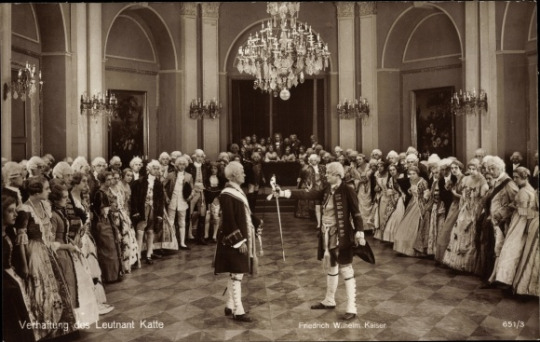
Yes, okay, the honorable Lieutenant getting arrested at the ball, very nice. Ugly wig, but what else is new. Pretty standard Katte, as it seems. Now, what is the second pictu-
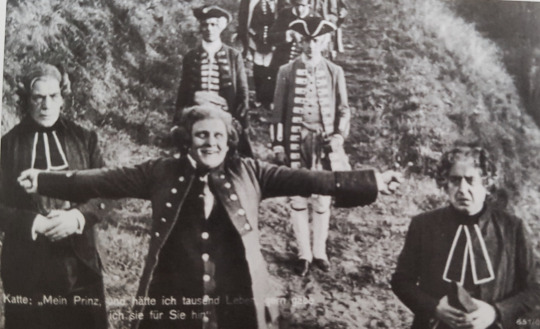
... Sheesh, that's terrifying. VERY happy to die for a Prince that he loves, that one. Also where are they? Definitely not Küstrin, by the looks of it. And why does the priest on the left look like Ian McKellen's grandpa in a Princess Leia wig?? So many questions that will never be answered.
Overall rating: ???
Deka-Film GmbH - Der alte und der junge König (1935)
We're moving on to the Nazi-Propaganda-stage of the Fridericus movies. But we're not here for an in-depth analysis (which would be warranted...), we're here for Katte! Portrayed by Claus Clausen, who would move on to play Prince Henry in another Fridericus movie seven years later and definitely looks more like Henry than Katte imo. He's all angles and cheekbones and light eyebrows and is ten years too old for Katte (and way too tall for either of them). The acting is... intense. There's no better word for it, every move he makes is intense.
Character wise, uh... he's a tough one, but he softens over the course of the movie. In his first appearance he shows up out of the blue in a pose that screams "ready to fight", in his second scene he tells Fritz that he's ashamed of him. Actual dialogue: "Are you Katte or are you the King?" "I am Katte. 😡😡 Your friend. 😡😡" He's SUPER passionate about being a soldier ("You pull me into this, ME, the SOLDIER Katte!!" who almost didn't return from England just a year prior, but ANYWAY). We get a scene with Wilhelmine discussing the miniature portrait he refused to return; as per usual it is conveniently forgotten that Fritz was also in this miniature portrait in favour of some romantic subtext. Katte gets all shy around her, which is surprising because in his scenes before that all he did was yell. I'd probably find it somewhat endearing, if they weren't Katte and Wilhelmine. We later see him in jail, gazing fondly at the miniature of JUST Wilhelmine before telling Müller to hand it to Fritz together with his last letter.
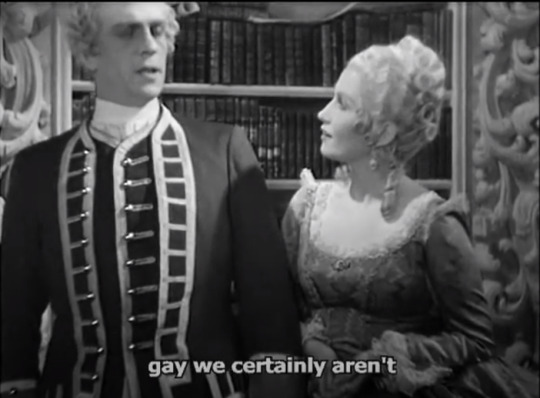
Indeed, Katte, indeed. Speaking of the portrait: We aren't told that he painted it himself. He just... has it. For reasons. We aren't told about his musical talents either; all we know about him is that he's a man of honour and a soldier in an unspecified regiment in Potsdam. He does have his moments, his dynamic with Fritz improves drastically after the first two scenes and he does seem like he cares, especially after witnessing one of FW's freakouts while hiding in the closet (lol). And he gets to comfort Fritz a little bit after that. After doing a complete 180° considering his views on desertion, he dies for a master he loves and would sacrifice 1000 lives for him. Could have used some more friendly scenes with Fritz or any scenes of what Katte did between agreeing to desert and dying, but the main character of this movie is FW, so we can't afford that. Despite some early difficulties I'd say he's a pretty solid Katte. I like a few scenes. Nothing special, but nothing egregiously bad either.
Overall rating: 5/10 intense stares, watchable mainly for comedic FW scenes
ZDF (Zweites Deutsches Fernsehen) - Der Thronfolger (1980)
Finally, a Katte with proper eyebrows!! Other than that, his biggest contribution is to help hide the affairs of the straightest and horniest Crown Prince known to film from a far too chill FW. How does he do that? Who knows. Once again we are treated to very few scenes of him and Fritz spending time together and actually being friends. We get about one and a half. Blergh. Character wise, he's... eh. Doesn't do much. Smiles more than other Kattes. Says that he adores Fritz and reads Voltaire with him, so at least we get a hint at his intellectual pursuits; no other hints at what he does apart from his job as Some Guy Who Follows FW Around. Has the audacity to grab Mine's arm and pull her back into her seat. We do get an interrogation scene where he claims to have done his best to thwart Fritz's plans at all times (none of which was shown to us) and before the execution he talks about how he pretended to be an atheist for clout for a while (which was also not shown to us). Other than that, we barely get to know Katte despite him meeting Fritz almost two years too soon. And his last words to Fritz are "Nothing of forgiveness. My death is an act of divine justice" which... is better than "Long live the King", I guess...? Eeeeh, didn't like it...
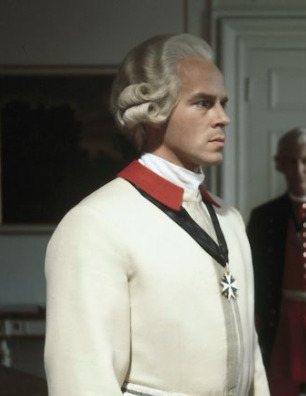
However: Aesthetically speaking, I'd say he's probably the best on this list. At 33 Jan Niklas is a little old (especially when he moves his face and looks 40 next to Fritz who is 20 and looks 12) and a wig that high with a forehead that high was... a choice (we're not quite entering Henry territory yet...), but look-wise he's pretty solid overall. I'll admit it, I'm just really happy about the eyebrows. Dark eyes, dark eyebrows, at least somewhat tan complexion - nice.
Overall rating: 3/10 splendid eyebrows, wouldn't recommend this movie overall, mainly because Fritz is kind of terrible imo
ARTE - Friedrich. Ein deutscher König (2011)
The One With The Women As Fritz and one Kai Michael Müller as Katte. He recently played a corpse in a Tatort that I saw, that was interesting. Anyway. The movie is a 90 minute documentary about Fritz's entire life, so he's only in it for a few minutes. Not much of a character to judge, but at least he's not in love with Wilhelmine in this one. He does get that scene where he buttons Fritz's uniform and comments on how good he looks in it... And the narration tells us about his musical interests, his military career, and how close he was to Fritz. So we've got the basics down.
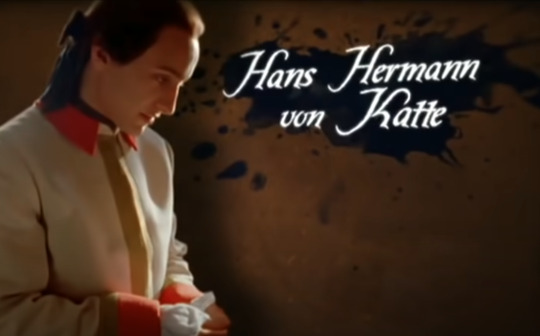
Aesthetically speaking, Kai Michael Müller is, once again, no Katte. Interestingly, instead of being too old like everyone else, he is actually too young - He's 30 now, and the movie is ten years old! Dang. Acting wise, it's... It's a documentary, I've seen worse. Some varying intonation would be nice though, maybe some emotion behind his lines... He talks like a soccer player in a post-game interview. I personally love how they do the keyhole-zoom-out thing over Fritz and Katte's faces and then cut to Dorgerloh saying "Well, we don't KNOW what they did and I don't want to speculate" - You may not, but Arte sure does.
Overall rating: 4/10 homoerotic things behind closed doors, watchable for a documentary
Spotlight Musicals - Friedrich. Mythos und Tragödie (2012)
Oh, FMuT, the things we could have had... I have feelings about this thing, considering I've spent hours of my life subbing it. This Katte is so straight, he's barely even friends with Fritz. Which is pretty much the worst you can do. I don't even expect people to make their relationship romantic, I'd just like them to portray a good friendship for once... Whenever they're on stage together during his lifetime, Katte is usually preoccupied with Wilhelmine and doesn't spare Fritz a second glance. Which is even weirder when you consider that the very same Fritz apparently felt so strongly about him that he hallucinated his ghost before he died (The whole thing reads as "Fritz is in love with him and Katte is too dumb and Wilhelmine-focused to notice, but also we didn't want to lose our conservative audience by making Fritz anything but straight, so we gave Countess Orzelska a sexy solo to cement his heterosexuality").
They don't even have a duet. Katte has major singing parts in his duet with Wilhelmine (which I skip every time) and a song with Mine and Fritz, is in the ensemble for maybe two more songs and gets two lines in the finale; LET HIM SING, GOD DAMNIT, HE'S ON STAGE 90% OF THE TIME! The very cool concept of Ghost Katte showing Fritz how much he's changed over the years was truly wasted on this show - as was Bienvenue in Sanssouci, because that song is a banger. But hey, at least they hug twice and we get that kiss we didn't get in Zeithain...? Even if it's played for a laugh...? Yay...? His personality is alright, I guess. He hides Fritz's flute, protects him from FW once and dreams of a more cultured future while still being very much a military man (in the infantry, for staging reasons...) and ghost-Katte is not afraid to tell Fritz that he thinks he sucks. We just don't really get why he even cares about Fritz in the first place or why Fritz cares about him. Oh, and he doesn't get ANY last words. What the fuck.
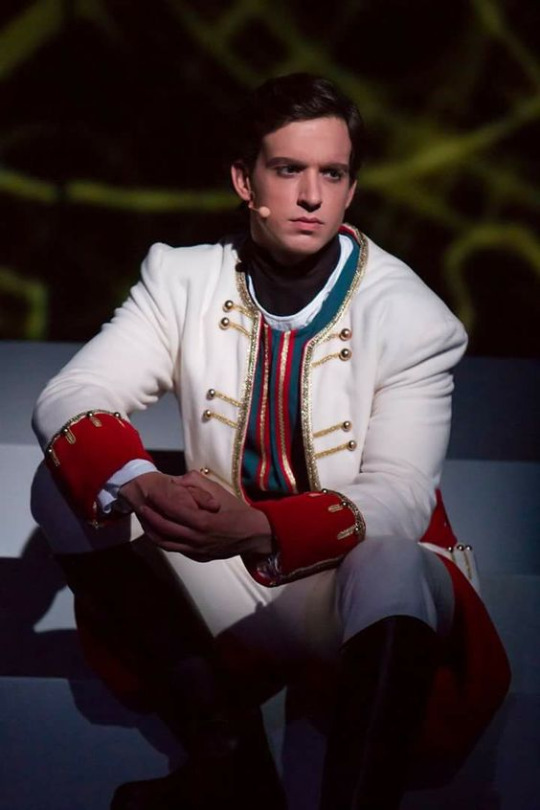
As for his looks: Maximilian Mann doesn't necessarily look like Katte, but it's better than others and at least he was about the right age (24 in the 2012 run, 26/27 when it came to Fulda two years later). In this specific picture, he even has acceptable eyebrows and the gloomy look that Wilhelmine mentions! A wig could have been nice (apparently they used one for another actor...?), but considering the wig quality we see on other people on stage, maybe it's good they went with his natural hair. I feel like I'm being a little hard on this one, but I love musicals and thus I'm very mad about the wasted potential. Also the man can sing, I've seen him live, give him a solo.
Overall rating: 4/10 Nonexistant duets, fun if you skip the right songs
And that's all for today, folks! One kissing gif for the road:

PART III
43 notes
·
View notes
Text
Coleção de Inverno - Capítulo 7
Uma queridíssima amiga me pediu que escrevesse sobre Goethe.
Aquele do Instituto Goethe, do Fausto, um dos mais importantes representantes da Literatura alemã, filósofo, estadista, cientista, dramaturgo e considerado pelo Instituto que leva seu nome como: “um verdadeiro Leonardo da Vinci alemão”.
Eu, que ainda nem terminei de ler “Os sofrimentos do jovem Werther”, nunca estudei o Romantismo alemão e nem falo sua língua, posso escrever sobre este personagem?? Topei a parada, pensando em fazer daquele meu jeito, descobrir algo do Goethe e não da sua obra. Procurar o que na sua vida podia ser contado para vocês, que já devem ter lido todos seus livros, assistidos os filmes e adquirido os CDs...
Me enchi de coragem e fui ler um pouco da sua biografia. Me chamou a atenção o tanto que esse cara amou no seu longo percurso nesta vida. Meu recorte então foi escolhido assim, as mulheres que passaram por sua vida e as marcas deixadas, além do costumeiro vai-e-vem de viagens que realizou tanto no Império como fora dele.
Para começar, vamos ao meu bordão habitual: Johann Wolfgang von Goethe nasceu em Frankfurt em 1749, no seio de uma família da alta burguesia. E como já foi dito antes, quem tem berço, tem escola, por isso o jovem estudou tudo que tinha direito, incluindo francês, inglês, italiano, latim, grego, ciências, religião, desenho, violoncelo e piano, além de dança e equitação. E tinha à disposição, em casa, uma biblioteca com mais de 2 mil livros. (abro o primeiro parêntese, queria puxar uma discussão sobre Meritocracia, mas não acho oportuno... ahahaha).
Mandaram o moleque estudar Direito, primeiro em Leipzig, depois em Strasbourg (entre 1770 e 1771). Como avisei antes, quero falar mais das mulheres do que da sua obra, então vou pular o fato de ter sido aí que ele conheceu a corrente literária “Sturm und Drang”, que o influenciou muito, e contar que foi quando conheceu Friedrike Brion, por quem nutriu uma paixão avassaladora e para quem escreveu muitas poesias de amor. Ficamos só na poesia mesmo porque a tese que ele apresentou na Faculdade foi rejeitada por ser confusa e ousada e por isso não obteve o diploma.
No ano seguinte, se mudou para Wetzlar, para trabalhar na corte de Justiça Imperial. Aí conheceu Charlotte Buff por quem se apaixonou. Acontece que ela estava noiva de outro, um tal de Kestner, com quem se casou. Tudo isso inspirou Goethe para escrever “Die leiden des Jungen Wethers” (Os sofrimentos do jovem Werther), sucesso absoluto no Império Alemão e além de suas fronteiras. A diferença entre a personagem e o autor é que o primeiro se matou pelo desespero de não realizar esse amor. O sucesso desse romance foi tanto que se criou uma verdadeira moda entre os jovens alemães, que passaram a se vestir como Werther, falar como ele e até se suicidarem como o personagem do livro. O próprio Goethe testemunhou a recuperação do corpo de uma menina que se suicidou, e que tinha um exemplar do seu romance no bolso. Estamos em 1774 e começa aqui sua fama internacional.
De volta à Frankfurt, um novo amor: Anna Elisabeth "Lili" Schönemann, filha de um banqueiro. Como um adolescente, se apaixonou perdidamente, e dirá a um amigo, já na velhice, que nunca esteve tão perto da felicidade como naquele momento. O esquisito é que depois de meses de relacionamento, quando o pai da moçoila quis organizar o casamento deles, Goethe rompeu o noivado e aceitou um convite para ir trabalhar em Weimar, para fugir do compromisso.
Chegando em Weimar, em 1775, deu de cara com Charlotte von Stein, casada, 7 anos mais velha do que ele, super culta e interessante (como são sempre as mulheres mais velhas!!) e se apaixonou perdidamente por ela. Será um amor platônico, mas ela influenciará fortemente o escritor, inspirando-o para escrever a novela “Wilhelm Meister” além da peça em prosa “Ifigênia em Táurida”.
Dizem que para fazer a encenação da peça, Goethe pediu que chamassem uma atriz, cantora e compositora importante no cenário cultural de então, com quem teve um breve romance. Não consegui pesquisar muito mais sobre ela porque parece que seu nome era Corona Shöter, então, com esse nome, os mecanismos de procura na web só identificaram o vírus!!!
A amizade entre Goethe e Charlotte durou uma década e foi interrompida quando, na noite de 3 de setembro de 1786, sem despedir de ninguém, escondido em uma charrete dos correios, e com um passaporte falso em nome de Phillipe Müller, Goethe fugiu para a Itália. Fugia tanto dessa relação mal resolvida, como do cansaço desses 10 anos no serviço público que desempenhava em Weimar. (ahhh .. eu faria exatamente o mesmo!!!)
Goethe ficou dois anos na Itália (eu também ficaria) e lá escreveu uma versão de “Fausto”, obra revista e revisada muitas vezes, escreveu “Torquato Tasso”, e ainda reescreveu, em versos, “Ifigênia em Táurida”, iniciando o classicismo alemão.
Em 1788 ele voltou para Weimar (eu teria ficado na Itália) mas não ao serviço do ducado. Depois deste retorno ele se dedicou completamente à sua arte. Agora estava mais maduro e centrado.
Conheceu, em 1794, o poeta Friedrich Schiller, com quem desenvolveu uma profunda amizade. Mas e quanto as mulheres?? Ahh, elas continuam sempre no seu radar.
Conheceu Chistiane Vulpius, jovem vinda de uma família de acadêmicos que foram empobrecendo. Seu pai teve que abandonar seus estudos na faculdade de Direito para sustentar a família e permitir que um de seus filhos estudasse. Ganhava pouco mas segurava a onda, até ser demitido de seu emprego como arquivista. A filha foi então forçada a buscar um trabalho e só conseguiu o de empregada doméstica. (é agora que a gente vai falar de Meritocracia??... não, melhor não ...)
Foi trabalhar na casa de um editor e foi nesse ambiente que conheceu Goethe.
Naquele mesmo verão já estavam apaixonados. (fico me perguntando como se faz para amar tanto...) Foi tanta felicidade que ele não parou de escrever poemas eróticos e felizes de doer e inventaram a moda de juntar os trapos, para horror e desespero da sociedade da época. Precisaram até se mudar para uma casa na periferia de Weimar, para se afastar da fofocagem.
Tiveram cinco filhos, mas o único que sobreviveu foi o primeiro, chamado August. Por fim, em 1806, se casaram, mas o preconceito contra a “empregadinha do Goethe” persistiu e ele chegou a pedir ajuda à uma amiga rica, Johanna Schopenhauer (mãe do filósofo), que convidasse sua esposa para tomar um chá. O comentário da viúva foi: "Se Goethe lhe deu seu nome, suponho que podemos dar-lhe uma xícara de chá."
Combinei com vocês de não entrar em detalhes sobre a obra e carreira de Goethe, mas posso dizer que entre final do século XVIII e início de XIX, ele exerceu grande influência tanto na política como na cultura, na arte e na filosofia europeia daquele período. Alguns nomes das pessoas com quem ele conversou e interagiu: Napoleão Bonaparte, Hegel, Beethoven, Schopenhauer, Schiller, além dos menos famosos.
Em 1816 morreu sua esposa, mas o coração do poeta não ficou vazio. Logo após essa perda, conheceu Marianne von Willemer, uma mulher linda e espirituosa, 40 anos mais nova, que será inspiração para um novo livro de poesias, “O divã ocidental-oriental”, recheado de erotismo, violência e filosofia.
Já com 72 anos, durante uma temporada de “águas curativas” em Marienbad, Goethe conheceu a jovenzinha Ulrike von Levetzov, no auge de seus 17 anos. Se apaixonou de novo (canso só de pensar...) e chegou a propor-lhe casamento, mas a família dela nem respondeu ao pedido absurdo.
Desiludido como o Werther de 50 anos antes, Goethe respondeu com uma nova peça literária: Elegia de Marienbad. Foi a última história de amor de nosso personagem, que passou os últimos anos dedicados à segunda parte de “Fausto”.
Ele morreu em 1832, dizem que solitário e infeliz.
Solitário.... depois de tanto amar ... e a Marisa Monte ta cantando aqui, agora:
“Bem que se quis, Depois de tudo, Ainda ser feliz....”
Simmmmmmmmm
Beijos
3 notes
·
View notes
Photo
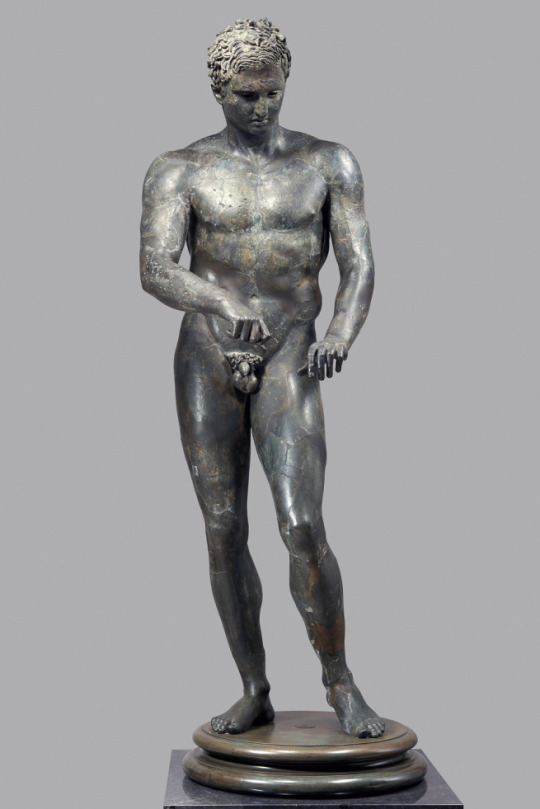
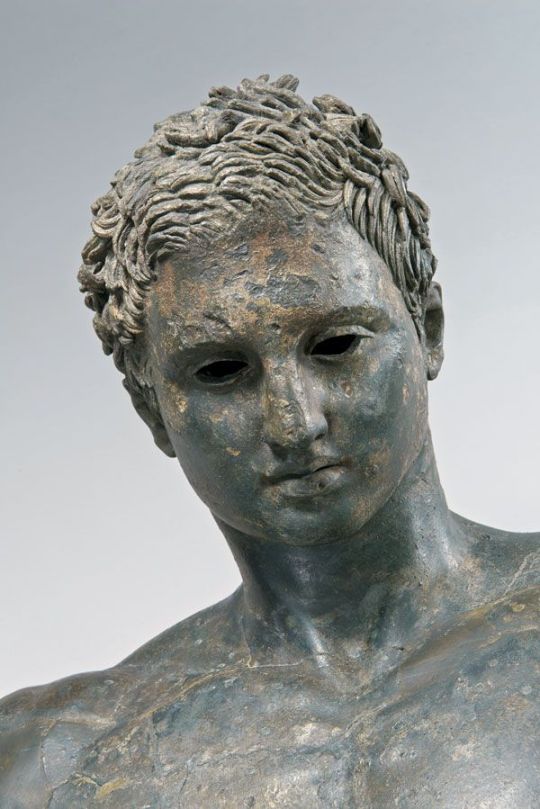

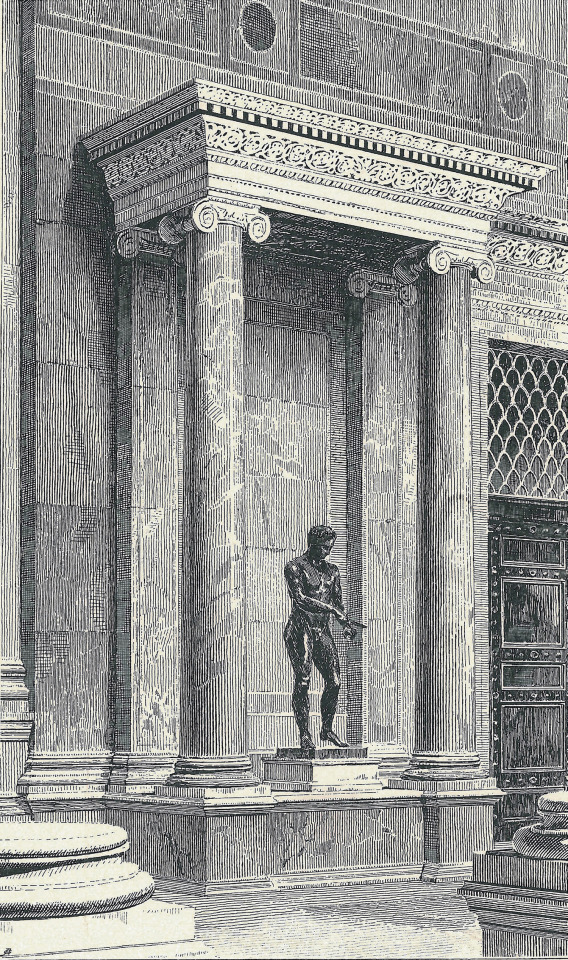
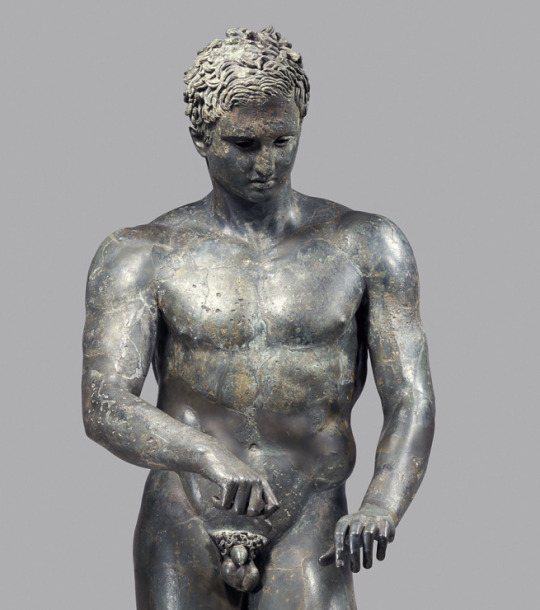
"Ephesian Apoxyomenos"
Ephesus, Ionia, Turkey
1–90 CE
Bronze and copper
height: 193 cm (76 in.), height with pedestal: 205 cm (80 11/16 in.), width (shoulders): 60 cm (23 5/8 in.), width (elbows): 65 cm (25 9/16 in.), depth (hands): 65 cm (25 9/16 in.), diameter: 68 cm (26 3/4 in.
Apoxyomenos (the "Scraper") is one of the conventional subjects of ancient Greek votive sculpture; it represents an athlete, caught in the familiar act of scraping sweat and dust from his body with the small curved instrument that the Romans called a strigil.
The Athlete from Ephesos, a Roman imperial copy of a Greek statuary type from the 4th century BCE was found at the very end of the 19th century, in the first years of the Austrian excavation in Ephesos, when research was concentrated on the major imperial monuments. In the palaestra of the Harbor Baths, the statue was set up in an aedicula and was destroyed when an earthquake caused the collapse of the hall roof. Due to an agreement between the Ottoman Sultan Abdul Hamid II and the Austrian Emperor Franz Joseph I, the fragments could be taken to Vienna as a gift to the emperor’s collections. In Vienna, Wilhelm Sturm was commissioned with the restoration and conservation of the statue in 1897. The recomposition of the athlete took as a model the marble athlete kept at the Uffizi, in Florence, once the similarity of the statuary type of the Apoxyomenos had been recognized. The individual fragments were treated physically and chemically and were fixed on brass strings. Then groups of fragments were mounted onto iron bars in order to build the “backbone”. The entire statue was filled with cement in order to stabilize the structure and to close the gaps in the surface.
462 notes
·
View notes